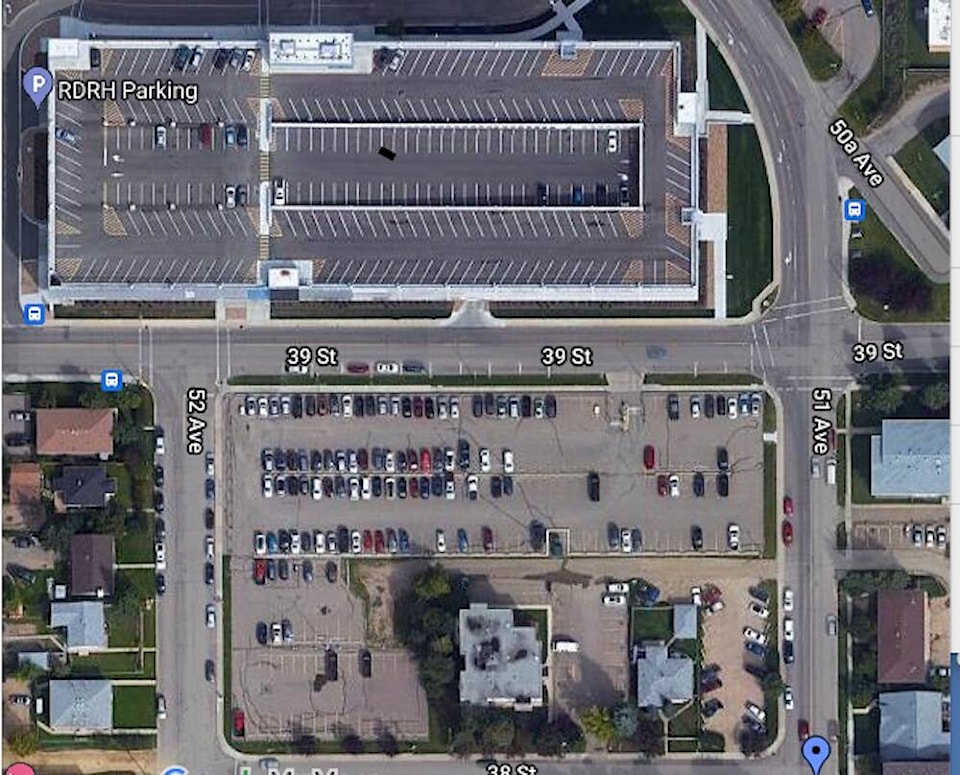The UCP government is turning part of the Red Deer hospital’s $1.8-billion expansion project into a public-private partnership experiment that is bound to fail, says Friends of Medicare.
Last week, Alberta Infrastructure announced a public information session on the Red Deer Regional Hospital Centre’s redevelopment, which will be held on March 14, and mentioned it will use the P3 delivery model for the ambulatory care building.
Executive director Chris Galloway said these types of partnerships have failed before, most recently with the for-profit private company DynaLIFE, which was contracted to provide lab services in 2022 and needed to be bailed out by the province in 2023.
“It’s disappointing. We’ve been through this show before. We don’t want to see the same thing happen to Red Deer,” Galloway said.
“We already have the ability to build the infrastructure. We don’t need to be doing public-private partnerships that reward profit to private corporations and give up control of our infrastructure and our services.”
Galloway, who is waiting for more details from the province about the contract, said ultimately, P3s tend to be a way of hiding debt and end up costing more in the long term.
Related:
UCP to use private-public partnership for portion of Red Deer hospital expansion
The ambulatory care building will be home to outpatient programs and services, and is one of two projects included in the expansion. The other is a new in-patient tower, along with expansion and renovation of the existing hospital’s main building.
Last week Alberta Infrastructure called P3s a “proven commodity” and that the ambulatory care portion of the hospital project showed value for money and was approved to move forward as a P3 in late 2023.
“Alberta taxpayers deserve to get the best value for their investment dollars, and ignoring this tool would be a mistake,” said Alberta Infrastructure, which anticipates a contract by May 2025.
“Regardless of the delivery method for the project phases, there will be one public operator (Alberta Health Services) responsible for providing the healthcare that the people of Red Deer can rely on.”
Related:
Contract awarded for construction of new Blackfalds high school
A Red Deer Polytechnic instructor agreed that the downside of P3s are that they end up costing more in the long run than publicly financed and managed projects for two reasons: profit and borrowing costs.
“The private sector partners have to make a profit on the project (which adds to the total cost), whereas the government does not need to make a profit,” said Dustin Quirk at the Donald School of Business, Science and Computing.
“The second factor is that with respect to project financing, government can borrow money on the bond market at much lower interest rates than any private sector entity. These higher private-sector borrowing costs for project financing ultimately get passed on to taxpayers.
“Overall, public-private partnerships have the potential to offer the benefits of business efficiency and innovation, but they will likely have a long-term higher price tag than well managed public infrastructure development.”
Quirk said it should be noted that the private sector already builds almost all public infrastructure through competitive bidding on projects for government, but P3s go beyond just the construction phase to include financing and/or long-term operations.
P3s are used by the government to collaborate with businesses to finance, develop, and/or operate public infrastructure like schools, courthouses, and hospitals.
“The goal of a public-private partnership is to create win-wins or build synergy by better utilizing the strengths of what each government and business has to offer.”
He said the expected benefits of using a P3 are better risk management (each party does what they are best at), the use of private financing instead of public debt, and the timely delivery of projects within budget through the use of incentives and penalties.
szielinski@reddeeradvocate.com
Like us on Facebook and follow us on Twitter
